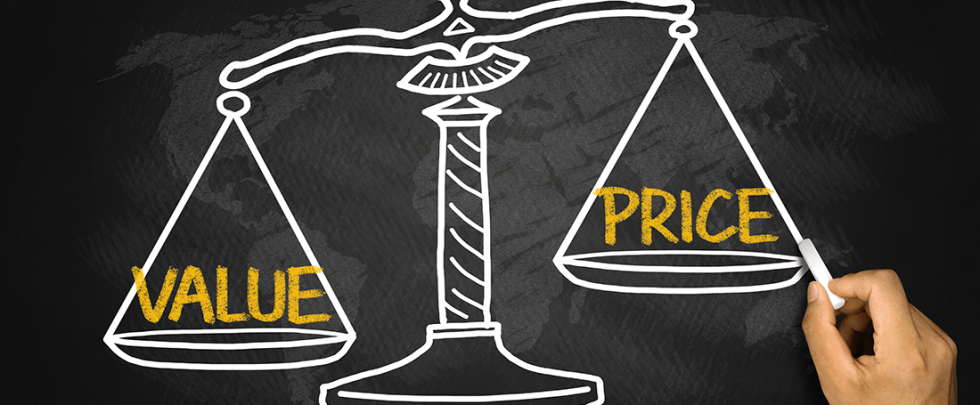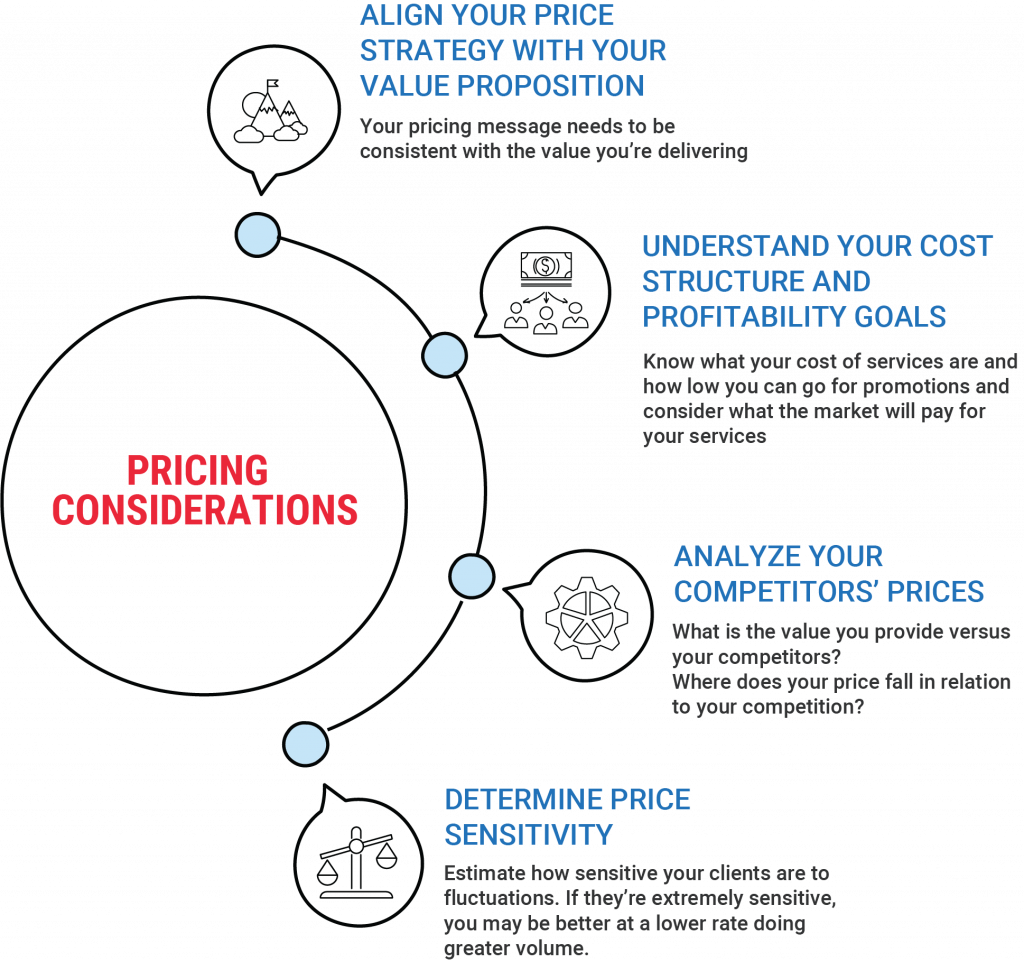PRICING: CONSIDERING YOUR SHORT-AND-LONG-TERM GOALS

When your price, value proposition and competitive position are aligned, you’re in the best situation to maximize revenue and profits.
Price is one of the classic “4Ps” of marketing (product, price, place, promotion). Yet at many B2B firms, marketing isn’t involved in pricing strategy. Linking your pricing strategy to your value proposition maximizes revenue and profits.
Pricing is a complex subject – there are many factors to consider, both for the short- and long-term. For example, your prices need to:
- Reflect the value you provide versus your competitors
- Consider what the market will pay for your services
- Enable you to reach your revenue and market share goals
- Maximize your profits
When you offer a truly unique product or service with little direct competition, it can be challenging to establish your price.
Put together a strong strategy and competitive analysis so you can see:
- What your prospects might pay for other solutions to their problems
- Where your price should fall in relation to theirs
Match your pricing strategy to your value proposition
Your price sends a strong message to your market – it needs to be consistent with the value you’re delivering.
- If your value proposition is operational efficiency, then your price needs to be extremely competitive.
- If your value proposition is product leadership or customer intimacy, a low price sends the wrong message. After all, if a luxury item isn’t expensive, is it really a luxury?
Understand your cost structure and profitability goals
Companies calculate these costs differently, so verify the exact calculations your company uses for:
- Cost of goods sold (COGS): the cost to physically produce a product or service
- Gross profit: the difference between the revenue you earn on a product and the cost to physically produce it
In addition, understand how much profit the company needs to generate. You’ll be far more effective when considering discount promotions – you’ll know exactly how low you can go and still be profitable.

Analyze your competitors’ prices
Look at a wide variety of direct and indirect competitors to gauge where your price falls. If your value proposition is operational efficiency, evaluate your competitors on a regular basis to ensure that you remain competitive.
Determine price sensitivity
A higher price or billable rate typically means lower volume. Yet you may generate more total revenue and/or profit with fewer clients at the higher price; it depends on how sensitive your clients are to price fluctuations. If they’re extremely sensitive, you may be better off at a much lower rate with substantially greater volume.
Estimate how sensitive your clients are to fluctuations – it will help you determine the right price and volume combination. More importantly, you can estimate how a price change can impact your revenue.
Give us a call (203) 894-6473 or email us at hello@yourmarketer.com.

